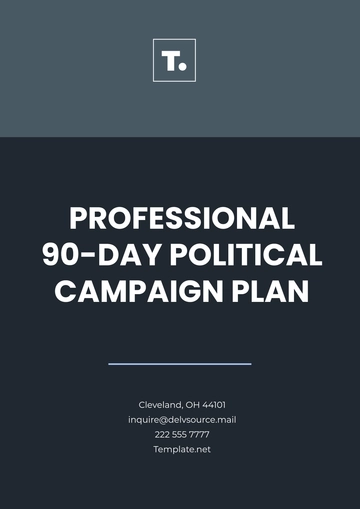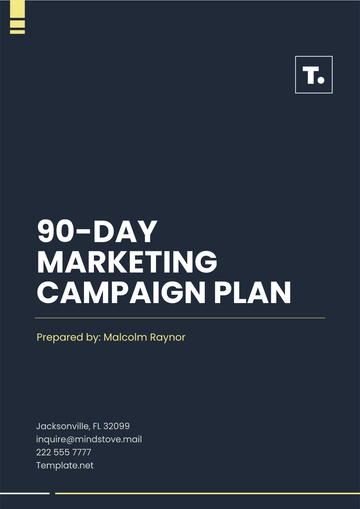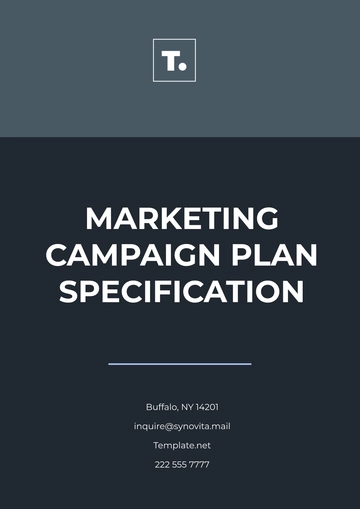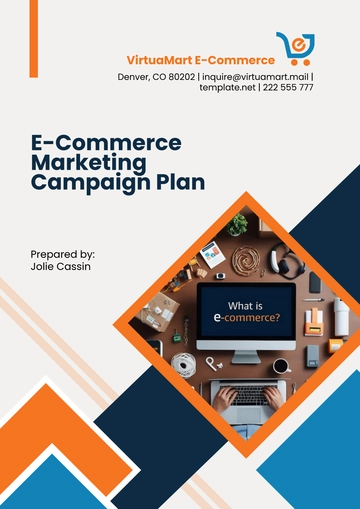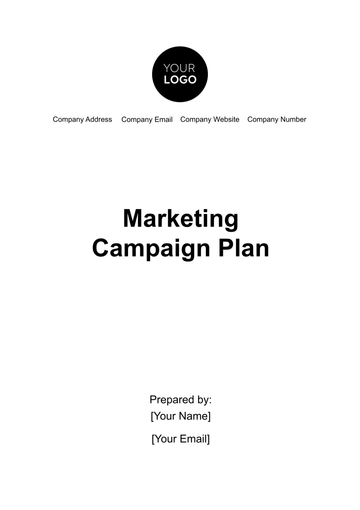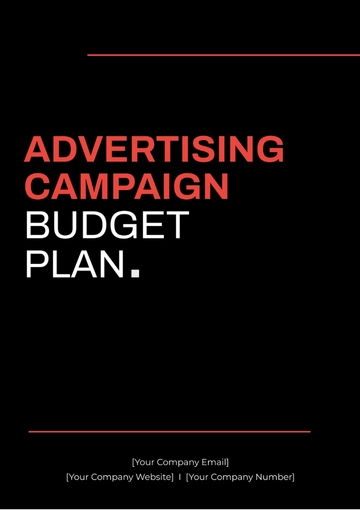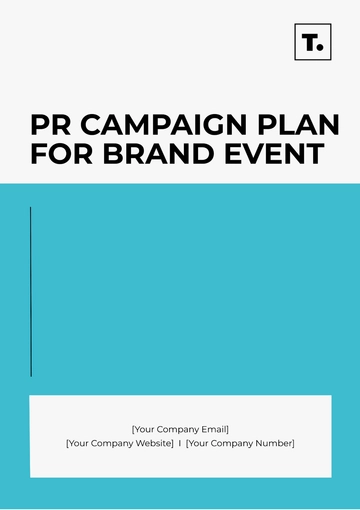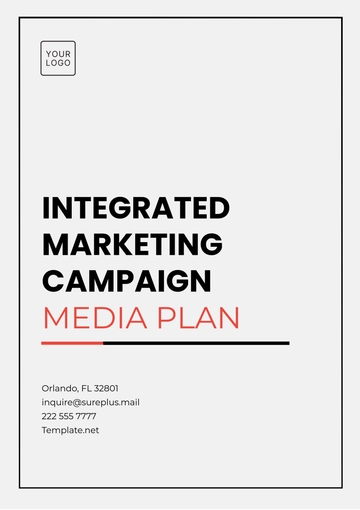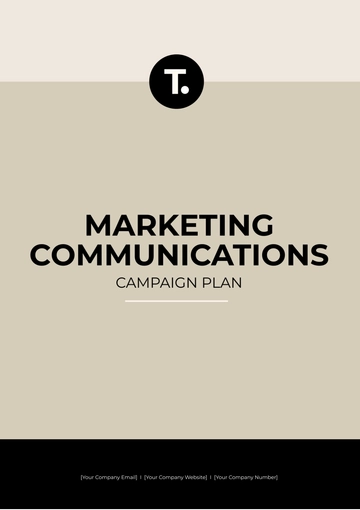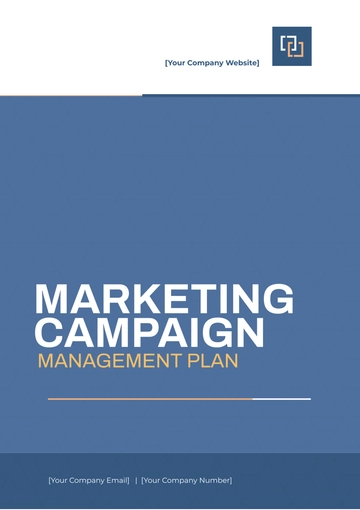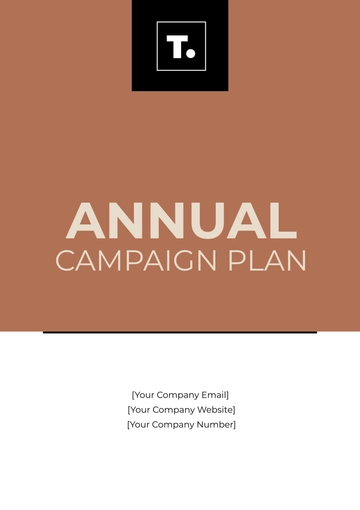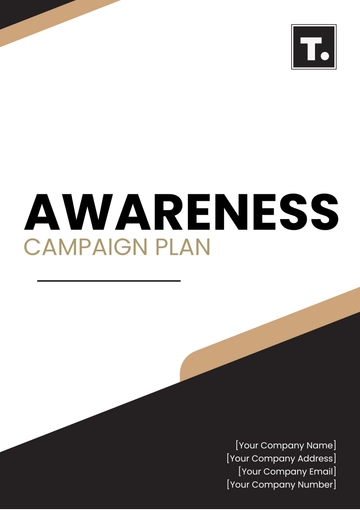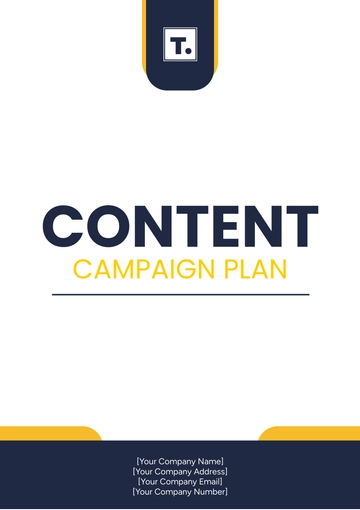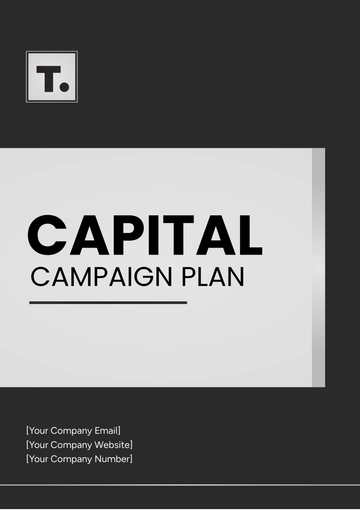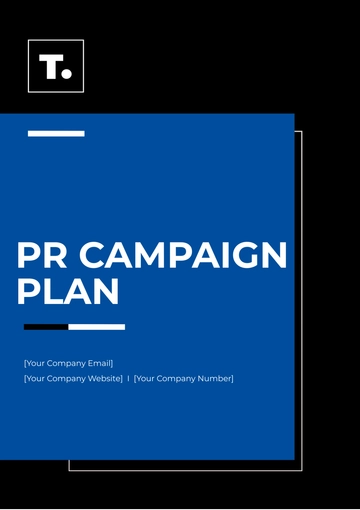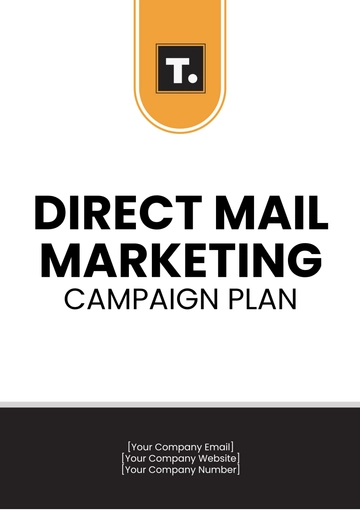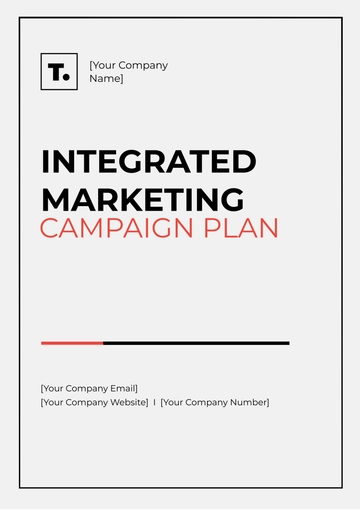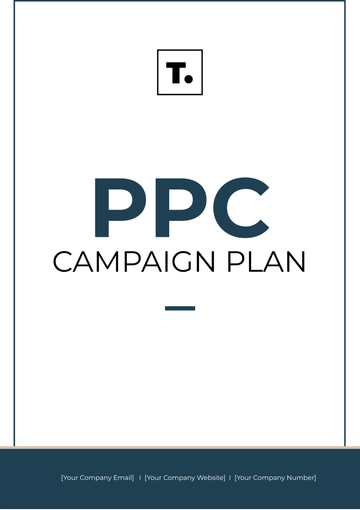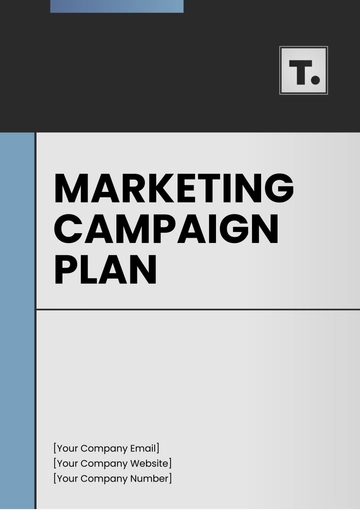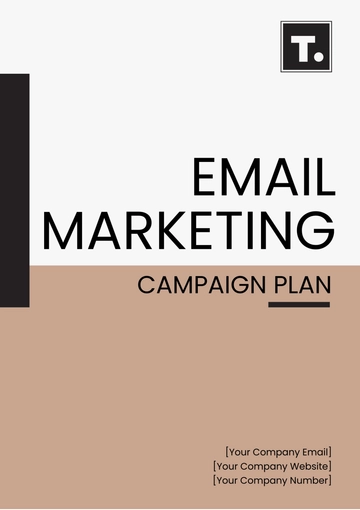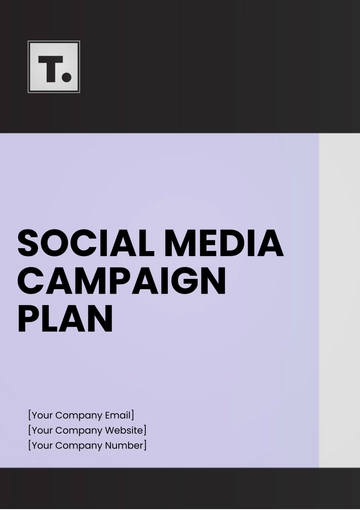Free Advertising Strategic Campaign Plan
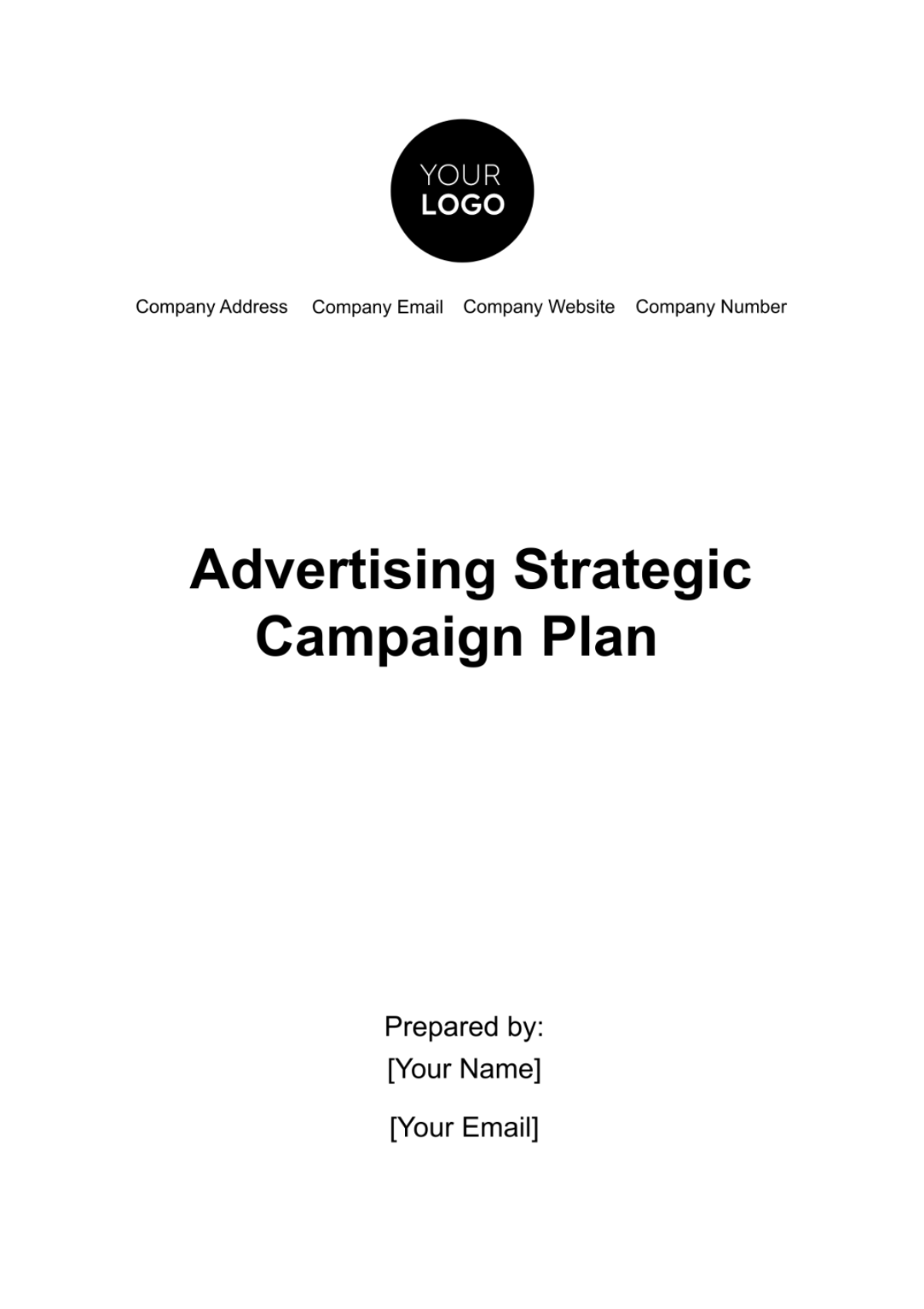
I. Executive Summary
The [Campaign Name] is an innovative advertising initiative aimed at promoting sustainable living among urban populations aged [20-45]. With an overarching message of "Sustainability is not just a choice, it's our future," the campaign seeks to raise awareness and inspire action towards environmental conservation. The campaign, spanning six months from [January to June 2050], is designed to position the brand as a thought leader in sustainability, resonating with a growing demographic of environmentally conscious consumers.
The expected outcomes are the following:
Increase brand awareness in the sustainability sector by 50%.
Drive a 30% uptick in engagement on digital platforms focusing on sustainability topics.
II. Market Research
In-depth market research forms the backbone of the campaign. Focusing on urban dwellers aged [20-45], the research explores this group's attitudes and behaviors towards sustainability. The target audience is characterized by a moderate to high interest in environmental issues, often influenced by social trends and digital media. Competitive analysis reveals how major competitors in the sustainability sector engage with similar audiences, providing valuable insights for differentiating our campaign. Consumer insights gathered through surveys and focus groups highlight a significant interest in sustainable living but also a gap in understanding practical implementation steps. This information guides the campaign's content and messaging, ensuring relevance and impact.
A. Competitive Analysis
[Competitor Name]: 35% market share, strong social media presence
[Competitor Name]: 25% market share, focus on community projects
[Competitor Name]: 15% market share, innovative sustainability products
B. Consumer Behavior Insights
70% show concern for environmental issues
50% actively seek sustainable living options
40% willing to pay a premium for sustainable products
III. Campaign Strategy
The campaign strategy centers on real-life stories to make sustainability relatable and actionable. By leveraging various channels, including social media, TV, podcasts, and billboards, the campaign aims to reach a broad yet targeted audience. The content strategy is a mix of informative articles, engaging videos, and interactive social media posts, each tailored to the platform's strengths and audience preferences. This multi-channel approach ensures maximum reach and engagement, making the campaign a part of everyday conversations among the target audience.
A. Creative Approach
Creative approach entails storytelling through real-life sustainable living examples.
B. Channel Strategy
Social Media: Instagram (35%), Twitter (25%), LinkedIn (20%)
Traditional Media: TV (15%), Billboards (5%)
C. Content Mix
Informative Articles: 30%
Interactive Posts: 40%
Video Content: 30%
IV. Campaign Goals and Objectives
The campaign has set ambitious but achievable goals. It aims to reach 5 million people with its message, achieve 500,000 social media interactions, and significantly increase website traffic and newsletter sign-ups. These goals are designed to enhance brand awareness, engage the audience deeply with the campaign's message, and ultimately drive conversions in the form of active participation and commitment to sustainable practices.
A. Awareness and Reach
Target of 5 million impressions
2 million unique viewers on digital platforms
B. Engagement
500,000 social media interactions
100,000 shares of campaign content
C. Conversion
40% increase in website traffic
30% growth in newsletter subscriptions
V. Budget Allocation
The budget for the campaign is meticulously allocated to ensure maximum impact across various channels. With a total budget of $2 million, the distribution is strategically planned to balance digital and traditional media, content creation, and other campaign activities.
The following chart and table showcase the budget allocation:
Budget Category | Allocation | Percentage of Total Budget |
Social Media Advertising | $600,000 | 30% |
TV Commercials | $500,000 | 25% |
Podcast Sponsorships | $300,000 | 15% |
Billboards and Outdoor | $400,000 | 20% |
Content Creation | $200,000 | 10% |
Total | $2,000,000 | 100% |
A. Social Media Advertising
This segment, getting the largest share of the budget, underscores the campaign's focus on digital platforms. It includes costs for paid advertisements, sponsored content, and influencer collaborations across platforms like Instagram, Twitter, and LinkedIn. The aim is to tap into the digital-savvy demographic of our target audience, offering high engagement potential at a relatively lower cost compared to traditional media.
B. TV Commercials
Allocated for producing and airing television commercials, this budget is earmarked for reaching a broader audience. The commercials will be strategically placed during prime time slots and popular shows to maximize reach and impact.
C. Podcast Sponsorships
Podcasts have been selected for their growing popularity, particularly among the urban, environmentally-conscious demographic. This budget covers sponsorships of relevant podcasts, including the creation of specialized content segments that align with the campaign's theme.
D. Billboards and Outdoor Advertising
Outdoor advertising remains a powerful tool for brand visibility, especially in urban areas. This budget allocation will cover high-traffic locations, ensuring that the campaign message is seen by a large number of people daily.
E. Content Creation and Management
This crucial part of the budget is dedicated to the creation of high-quality, engaging content for various platforms, including articles, videos, graphics, and interactive online tools. It also covers the cost of managing these content pieces across different platforms.
VI. Campaign Timeline
The campaign timeline is structured into distinct phases over six months, ensuring a well-coordinated and effective roll-out.
Here’s the table for the campaign timeline:
Phase | Months | Activities |
Pre-Launch | December | Strategy Finalization, Teaser Content, Influencer Engagements |
Phase 1 | January - February | Market Research, Strategy Development |
Phase 2 | March - April | Content Creation, Preliminary Digital Launch |
Phase 3 | May - June | Full Campaign Rollout, TV & Outdoor Advertising |
A. Pre-Launch
This preparatory phase involves finalizing the overall strategy, creating teaser content, and initiating engagements with influencers and media partners. The focus is on building anticipation and laying the groundwork for the campaign's launch.
B. Phase 1
The initial phase is dedicated to conducting in-depth market research and finalizing the campaign strategy. This research helps tailor the campaign to the target audience's preferences and behavior, ensuring relevance and impact.
C. Phase 2
In these months, the focus shifts to content creation and a preliminary launch on digital platforms. This phase sees the rolling out of engaging, informative content designed to captivate the audience and start building momentum for the campaign.
D. Phase 3
This final phase marks the full rollout of the campaign, including the launch of TV commercials and outdoor advertising. The scale and reach of the campaign are at their peak during this period, aiming to maximize awareness and engagement.
VII. Content Plan
The content plan is crafted to maintain audience engagement throughout the campaign duration. The initial four weeks are focused on introducing the campaign and its objectives, utilizing social media teasers and blog posts. As the campaign progresses, it includes a series of TV commercials and podcast episodes, broadening the reach and depth of the campaign's message. In the later stages, the campaign emphasizes interactive social media initiatives and community events, fostering a sense of participation and belonging among the audience. Influencer collaborations further amplify the campaign's reach and credibility.
Initial 4 Weeks: Launch teasers and introductory blog posts
Weeks 5-8: First series of TV commercials and Podcast episodes release
Weeks 9-12: Interactive social media campaign
Weeks 13-16: Community events and Influencer collaborations
VIII. Key Performance Indicators (KPIs)
KPIs are essential for measuring the success of the campaign. For social media, the focus is on engagement rates, follower growth, and the usage of campaign-specific hashtags. On the website, metrics such as traffic increase and newsletter sign-ups are tracked. For traditional advertising channels like TV and outdoor ads, reach and estimated impressions are key indicators. These KPIs provide a quantitative measure of the campaign's impact and effectiveness, guiding adjustments and improvements throughout its course.
A. Social Media Metrics
Engagement rate: Target > 5%
Follower growth: Target > 10%
Hashtag usage: Target > 50,000 uses
B. Website Metrics
Traffic increase: Target > 40%
Newsletter sign-ups: Target > 30%
IX. Risk Management and Contingencies
Risk management is crucial for the campaign's success. Potential risks include negative public reactions, changes in market trends, or unforeseen events that could impact campaign relevance. The contingency plans involve adjusting the content tone, shifting the focus to emerging channels, or reallocating the budget to more effective avenues. This proactive approach to risk management ensures the campaign's resilience and adaptability in a dynamic market environment.
A. Risks
Negative Public Reaction
Market Trends Shift
Unforeseen Events
B. Contingency Plans
Adjust content tone
Shift focus to emerging channels
Budget reallocation
X. Evaluation and Reporting
Regular evaluation and reporting are integral to the campaign. Monthly reports provide updates on progress against KPIs, budget expenditure, and audience feedback. A comprehensive post-campaign review analyzes the campaign's overall success, lessons learned, and recommendations for future initiatives. This continuous evaluation ensures that the campaign remains on track towards its objectives and provides valuable insights for ongoing improvement.
Monthly Reports: Monthly reports will include KPI progress, budget expenditure and audience feedback.
Post-Campaign Review: Our post-campaign review involves success analysis, lessons learned and future recommendations.
XI. Conclusion
The [Campaign Name] campaign represents a comprehensive and dynamic approach to promoting sustainable living among urban populations. Through a meticulously planned strategy that integrates in-depth market research, multi-channel content delivery, and clearly defined goals and objectives, the campaign is poised to make a significant impact in the realm of environmental awareness and action.
The strategic allocation of a $2 million budget across various media and content creation underscores the campaign's commitment to reaching a broad audience with a powerful message. The phased campaign timeline ensures a structured rollout, allowing for flexibility and adaptation as the campaign progresses. The content plan, designed to be both engaging and informative, is central to the campaign's aim to foster a deeper understanding and commitment to sustainability.
Measurable KPIs will provide ongoing assessment and guidance, ensuring the campaign remains effective and goal-oriented. Risk management strategies have been put in place to address potential challenges, ensuring the campaign's resilience. Regular evaluation and reporting will facilitate adjustments and enhancements, ensuring continuous improvement and success.
[Campaign Name] stands as a forward-thinking initiative, not just in its message of sustainability but also in its approach to modern marketing. It represents an ideal blend of passion for a cause and strategic marketing prowess, setting a benchmark for future campaigns aiming to make a difference in society.
- 100% Customizable, free editor
- Access 1 Million+ Templates, photo’s & graphics
- Download or share as a template
- Click and replace photos, graphics, text, backgrounds
- Resize, crop, AI write & more
- Access advanced editor
Plan your advertising campaigns effortlessly with our Advertising Strategic Campaign Plan Template brought to you by Template.net! This fully editable and customizable plan ensures you include every important detail. The AI Editor Tool makes editing user-friendly, allowing you to provide a comprehensive campaign plan that drives advertising success! Get started!
You may also like
- Finance Plan
- Construction Plan
- Sales Plan
- Development Plan
- Career Plan
- Budget Plan
- HR Plan
- Education Plan
- Transition Plan
- Work Plan
- Training Plan
- Communication Plan
- Operation Plan
- Health And Safety Plan
- Strategy Plan
- Professional Development Plan
- Advertising Plan
- Risk Management Plan
- Restaurant Plan
- School Plan
- Nursing Home Patient Care Plan
- Nursing Care Plan
- Plan Event
- Startup Plan
- Social Media Plan
- Staffing Plan
- Annual Plan
- Content Plan
- Payment Plan
- Implementation Plan
- Hotel Plan
- Workout Plan
- Accounting Plan
- Campaign Plan
- Essay Plan
- 30 60 90 Day Plan
- Research Plan
- Recruitment Plan
- 90 Day Plan
- Quarterly Plan
- Emergency Plan
- 5 Year Plan
- Gym Plan
- Personal Plan
- IT and Software Plan
- Treatment Plan
- Real Estate Plan
- Law Firm Plan
- Healthcare Plan
- Improvement Plan
- Media Plan
- 5 Year Business Plan
- Learning Plan
- Marketing Campaign Plan
- Travel Agency Plan
- Cleaning Services Plan
- Interior Design Plan
- Performance Plan
- PR Plan
- Birth Plan
- Life Plan
- SEO Plan
- Disaster Recovery Plan
- Continuity Plan
- Launch Plan
- Legal Plan
- Behavior Plan
- Performance Improvement Plan
- Salon Plan
- Security Plan
- Security Management Plan
- Employee Development Plan
- Quality Plan
- Service Improvement Plan
- Growth Plan
- Incident Response Plan
- Basketball Plan
- Emergency Action Plan
- Product Launch Plan
- Spa Plan
- Employee Training Plan
- Data Analysis Plan
- Employee Action Plan
- Territory Plan
- Audit Plan
- Classroom Plan
- Activity Plan
- Parenting Plan
- Care Plan
- Project Execution Plan
- Exercise Plan
- Internship Plan
- Software Development Plan
- Continuous Improvement Plan
- Leave Plan
- 90 Day Sales Plan
- Advertising Agency Plan
- Employee Transition Plan
- Smart Action Plan
- Workplace Safety Plan
- Behavior Change Plan
- Contingency Plan
- Continuity of Operations Plan
- Health Plan
- Quality Control Plan
- Self Plan
- Sports Development Plan
- Change Management Plan
- Ecommerce Plan
- Personal Financial Plan
- Process Improvement Plan
- 30-60-90 Day Sales Plan
- Crisis Management Plan
- Engagement Plan
- Execution Plan
- Pandemic Plan
- Quality Assurance Plan
- Service Continuity Plan
- Agile Project Plan
- Fundraising Plan
- Job Transition Plan
- Asset Maintenance Plan
- Maintenance Plan
- Software Test Plan
- Staff Training and Development Plan
- 3 Year Plan
- Brand Activation Plan
- Release Plan
- Resource Plan
- Risk Mitigation Plan
- Teacher Plan
- 30 60 90 Day Plan for New Manager
- Food Safety Plan
- Food Truck Plan
- Hiring Plan
- Quality Management Plan
- Wellness Plan
- Behavior Intervention Plan
- Bonus Plan
- Investment Plan
- Maternity Leave Plan
- Pandemic Response Plan
- Succession Planning
- Coaching Plan
- Configuration Management Plan
- Remote Work Plan
- Self Care Plan
- Teaching Plan
- 100-Day Plan
- HACCP Plan
- Student Plan
- Sustainability Plan
- 30 60 90 Day Plan for Interview
- Access Plan
- Site Specific Safety Plan



